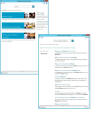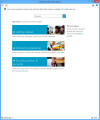
 |

|
| ActiveWin: Reviews | Active Network | New Reviews | Old Reviews | Interviews |Mailing List | Forums |
|
|
|
|
|
DirectX |
|
ActiveMac |
|
Downloads |
|
Forums |
|
Interviews |
|
News |
|
MS Games & Hardware |
|
Reviews |
|
Support Center |
|
Windows 2000 |
|
Windows Me |
|
Windows Server 2003 |
|
Windows Vista |
|
Windows XP |
|
|
|
|
|
|
|
News Centers |
|
Windows/Microsoft |
|
DVD |
|
Apple/Mac |
|
Xbox |
|
News Search |
|
|
|
|
|
|
|
ActiveXBox |
|
Xbox News |
|
Box Shots |
|
Inside The Xbox |
|
Released Titles |
|
Announced Titles |
|
Screenshots/Videos |
|
History Of The Xbox |
|
Links |
|
Forum |
|
FAQ |
|
|
|
|
|
|
|
Windows XP |
|
Introduction |
|
System Requirements |
|
Home Features |
|
Pro Features |
|
Upgrade Checklists |
|
History |
|
FAQ |
|
Links |
|
TopTechTips |
|
|
|
|
|
|
|
FAQ's |
|
Windows Vista |
|
Windows 98/98 SE |
|
Windows 2000 |
|
Windows Me |
|
Windows Server 2002 |
|
Windows "Whistler" XP |
|
Windows CE |
|
Internet Explorer 6 |
|
Internet Explorer 5 |
|
Xbox |
|
Xbox 360 |
|
DirectX |
|
DVD's |
|
|
|
|
|
|
|
TopTechTips |
|
Registry Tips |
|
Windows 95/98 |
|
Windows 2000 |
|
Internet Explorer 5 |
|
Program Tips |
|
Easter Eggs |
|
Hardware |
|
DVD |
|
|
|
|
|
|
|
ActiveDVD |
|
DVD News |
|
DVD Forum |
|
Glossary |
|
Tips |
|
Articles |
|
Reviews |
|
News Archive |
|
Links |
|
Drivers |
|
|
|
|
|
|
|
Latest Reviews |
|
Xbox/Games |
|
Fallout 3 |
|
|
|
Applications |
|
Windows Server 2008 R2 |
|
Windows 7 |
|
|
|
Hardware |
|
iPod Touch 32GB |
|
|
|
|
|
|
|
Latest Interviews |
|
Steve Ballmer |
|
Jim Allchin |
|
|
|
|
|
|
|
Site News/Info |
|
About This Site |
|
Affiliates |
|
Contact Us |
|
Default Home Page |
|
Link To Us |
|
Links |
|
News Archive |
|
Site Search |
|
Awards |
|
|
|
|
|
|
|
Credits |

|
Product: Windows 8 |
Support Services & Activation 3.0
| Table Of Contents (45 Pages) |
| 1:
Introduction 2: Pricing, Editions & System Requirements 3: Installation, Setup & Upgrading 4: Initial Impressions 5: Daily Usage & Application Compatibility 6: Desktop 7: File Explorer 8: Start Screen Apps 9: Internet Explorer 10 10: Networking & Connectivity 11: Windows Store 12: Gaming 13: Advanced Features - Part 1 14: Advanced Features - Part 2 15: USB 3.0 Support & Security 16: Performance & Reliability 17: Support Services & Activation 3.0 18: Other Features 19: Conclusion & Online Resources |
Servicing Windows 8 sees some improvements that ease the inconvenience of maintaining Windows. If itís one thing people find hard to deal with in Windows is the diligent barrage of updates the OS offers every second Tuesday, this is true of other platforms such as Linux and OS X, but on Windows, itís really an annoyance. Microsoft does include some options in Windows Update under Windows 7/Vista such as setting Windows to download updates but let you choose when to install them; this is what I have personally selected. If you donít keep aware of it though, you can forget or ignore to apply the updates. Windows 8 makes some exceptions, you can postpone non-critical updates and install them after a month, this will at least lessen the need to install every update and restart when an update needs the operating system to be recycled. Critical updates will still be installed when they become available though and if a restart is required, you will have to do it. Itís a compromise I can work with, I also understand the complexity of Windows itself and you will never get this perfect. Microsoft is also making some other improvements by handling the automatic update of third party Tile applications available through the Windows Store. Microsoft said they canít support third party applications in the classic Desktop application because those applications are more varied and complex and some already use their own update mechanism.
Help and Support seems to be undergoing some changes, I notice there is a lack of offline help content, which means Microsoft is making help content only available online. I notice when I did a search for some help topics, I was fed content from online only with results appearing in real time. During the beta, there was help content from Microsoftís own Microsoft Answers and TechNet forums allowing you to search for solutions and the best answers along with those with the most votes appear when you search for help. Microsoft Answers has a wealth of knowledge and solutions that have been built up over the years. Another thing that would be great is to have us the user vote on results to decide if they are helpful.
Microsoft introduced product activation with the release of Windows XP. Over the years Microsoft has refined the experience. Windows 8 takes it a step further, in fact, product activation is invisible. When you setup Windows 8 on a new computer, you have to initially enter the product key (unlike Windows 7 which required this during the Out of Box Experience). The minute Windows 8 detects an Internet Connection it activates itself. Windows 8 does not have the old 30 day grace period familiar to Windows Vista and Windows 7 users. What happens if you donít have Internet access? You can continue to run Windows 8 including Metro applications without any hindrance, you just wonít be able to access certain customization options such as the ability to change your Start Screen background, start screen and color scheme. A watermark will also become apparent on screen and cannot be hidden, it even appears on your programs, so if you watching a full screen movie, you will see a watermark. Activation still supports tradition phone activation, so if you are nowhere near an Internet activation, you should not have to worry. Managing your genuine status in Windows 8 is also much easier. You can view your partial product key (something that required command line operations in previous versions of Windows), so if you have multiple copies of Windows 8 installed on different PCís throughout your home, you can match and compare. If you need to purchase an additional license, you can also do some from the new Genuine Center in Windows 8. One of the improvements Microsoft is making to Activation 3.0 for newly built machines that come preloaded with Windows 8, you wonít have a COA (Certificate of Authenticity) sticker attached to the machine anymore. Instead, this will be embedded in the BIOS. This will avoid product keys from being compromised and OEMs will buy what they need.
| ę Performance & Reliability | Other Features Ľ |


